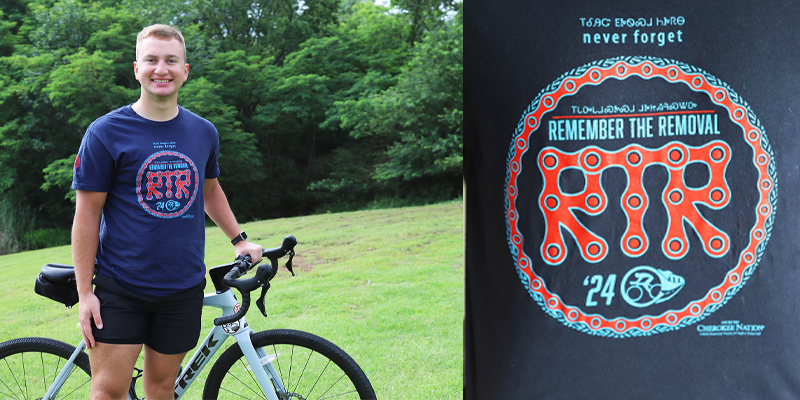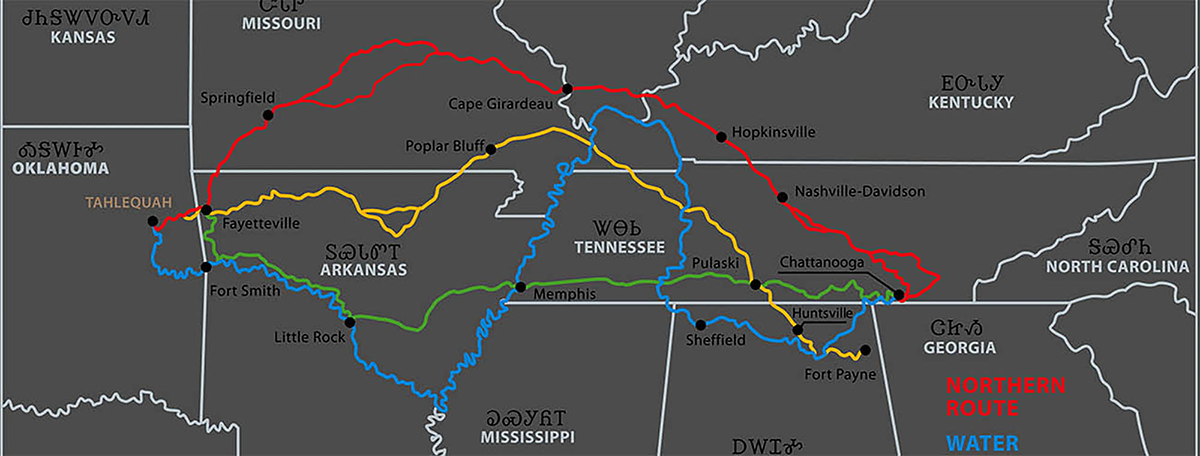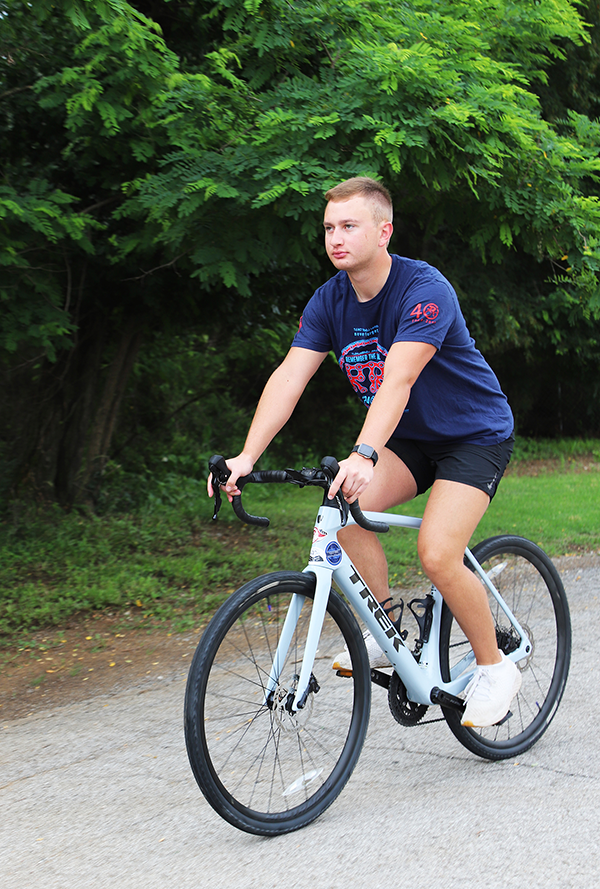
As goes the saying, “The journey of 1,000 miles begins with a single step.”
For Rogers State University senior Jaxen Smith, that nearly-1,000-mile journey will begin on May 28, when he joins students from across the state for the “Remember the Removal Bike Ride.”
For those unfamiliar, the “Remember the Removal Bike Ride” allows Cherokee youth to retrace the Trail of Tears on bicycle and to get a glimpse of the hardships faced by their ancestors when they made the same trek on foot.
Smith, 22, said he’s been training for the ride for months, although he’s actually been preparing for this his entire life.
“I have a strong connection to my (Native American) culture and heritage – I fell in love with who I am and how to express myself because of my grandmother, Anita,” he said. “She was a significant part of my (Native American) identity and she served as the foundation of my relationship with God. She used Native American traditions to make connections between God and my culture – fishing, cooking, and hunting were among these traditions.
“I’ve always wanted to do something that will honor my ancestors and make me proud, and this ride is the opportunity for me to do that,” he said. “Over the past few years, I’ve faced some hardships, and through this bike expedition, I’ll be challenged in a way to connect with my ancestors, who – through bravery and fortitude – endured so much, persevered, and overcame.”
Although making the 950-mile ride itself is a daunting prospect, it’s shorter than the route taken by riders in the inaugural “Remember the Removal Bike Ride” in 1984 – 1,200 miles, and much shorter than the actual Trail of Tears, which extended more than 5,000 miles from North Carolina through Tennessee, Georgia, Alabama, Kentucky, Illinois, Arkansas, Missouri and ultimately, Oklahoma.
“We’ll be taking the northern route – which is the route taken since 2009 – which will take us from New Echota, Georgia, through Tennessee, Kentucky, Illinois, Missouri, through Arkansas, and end at the Cherokee Nation capitol in Tahlequah,” he said.

Over the course of the ride, cyclists will visit several historic sites significant to the Cherokee people, such as the Kituwah Mound in the original Cherokee homeland; stop at unmarked graves of their ancestors; visit New Echota, the former capitol in Georgia; stop at Blythe Ferry along the Tennessee River, where the Cherokees gathered during their forced removal; and take time to reflect on their ancestors at Mantle Rock and more.
For the past several months, one of the original 1984 riders – Will Chavez – has been helping train and coordinate the 2024 riders for the experience, but even before he began his official training, Smith learned about the ride first-hand.
“My sister, Kaylee, actually participated in (the ride) in 2021 – she was supposed to go in 2020, but it got pushed back because of COVID,” Smith said. “After she came back, she said it was a life-changing, moving experience for her – mentally, physically, and spiritually, and that the places you see, the places you walk, the places where our ancestors were – are profoundly moving.”
 Smith, who is one-sixth Creek but a registered Cherokee, also is active in RSU’s Native American Student Association (NASA), which honors the culture and history of indigenous students and their ancestors.
Smith, who is one-sixth Creek but a registered Cherokee, also is active in RSU’s Native American Student Association (NASA), which honors the culture and history of indigenous students and their ancestors.
“We had a very small group last (academic) year, but we’re hoping to add more members next year,” he said. “It’s not just for Cherokee students, but for students from all tribes, all Native American or Native American-interested persons. I want more inclusive things brought (to the group). It’s great for bringing awareness about the culture to students and RSU is very supportive of the group and of its members.”
As he looks at the journey ahead, Smith said he’s most looking forward to a deepening appreciation of his culture and his heritage.
“Growing up, there wasn’t really a lot (taught) about the Trail of Tears and now, learning about what happened, what truly went on and how our ancestors were forcefully removed from their homes – I just want to be able to learn more about removal itself and how our people survived, how their strength brought us to where we are today,” he said. “It’s not going to be easy. It’s going to be difficult physically – especially the first few days, during which, we’ll be biking through mountains in Tennessee – and mentally, going through and seeing all the spots our ancestors walked through, which will be both heartbreaking and inspiring.
“It’s my hope that, through overcoming my own struggles and through completing this ride, I can serve as a guiding light to younger native children who are going through their own struggles, to inspire and encourage them,” he said.
Smith, 22, graduated from Sequoyah High School in Tahlequah in 2021, after which, he briefly attended the University of Tulsa before coming to RSU, where he is studying allied health, pre-physical therapy. He is slated to graduate in the spring 2025 semester.
For information about the Native American Student Association, contact faculty advisor Rebekah Warren at [email protected].
Rogers State University offers an Associate of Arts in Native American studies, a degree option which enhances a student’s understanding of Native American culture, history, spirituality, language, art, and contemporary tribal issues.
For more information about the “Remember the Removal Bike Ride,” visit https://www.cherokee.org/about-the-nation/remember-the-removal.
